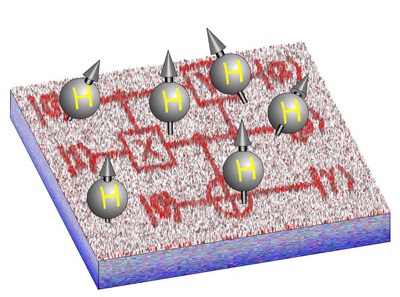2 Feb 2017
A paper, based on NPL collaborative research, has been published in the journal Physical Review Letters The work paves the way for the identification and elimination of small amounts of surface defects whose presence on the surfaces of solid state quantum devices is detrimental to their performance.
The research was the result of a fruitful collaboration between NPL's Quantum Detection Group, the Quantum Device Physics Laboratory at Chalmers University of Technology and the Institute of Chemical Physics at the University of Latvia.
The advancement of quantum computing faces a tremendous challenge in improving the reproducibility and robustness of quantum circuits. One of the biggest problems in this field is the presence of noise intrinsic to all these devices, the origin of which has puzzled scientists for many decades.
The current research shows that the same hyperfine signatures of atomic Hydrogen used by astronomers to study the violent birth of distant stars reveal themselves in very small quantities in these tiny ultracold quantum circuits.
The identification of these elusive yet detrimental spins by electron spin resonance shed new light on the origin of magnetic noise in quantum circuits, showing great promise for its mitigation. Remarkably, highly reactive physisorbed atomic hydrogen, a by-product of water dissociation, is stable in very small densities on the surface of these devices, closely matching the ubiquitous density of previously unknown paramagnetic species believed to be responsible for flux noise.
The detection technique presented in the paper can also be applied in a wider context to study the surface chemistry of commonly used oxide surfaces; important for many other fields such as catalysis, sensing, medical imaging and environmental technologies.
The paper was selected as an 'Editor's Suggestion', and was published together with another study by UCSB/Google that finds similar spectroscopic fingerprints in the noise spectra of superconducting qubits. Together these findings make a significant step towards understanding and eliminating noise and decoherence in superconducting qubits and other quantum devices.
Find out more about NPL's Quantum Detection research













